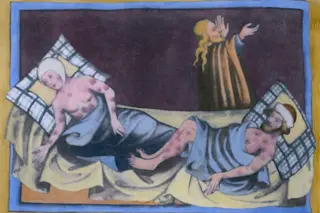A few days ago Robin Hanson brought this chart of world population to my attention:
On the x-axis you have time, 12,000 years ago to the present. On the y-axis an estimate of the total world population log-transformed. The data is derived from the US Census low estimate. Granting the data's accuracy for the purposes of reflection, Robin's question was what could have occurred between 1000 and 500 BC to produce such a rapid population rise? My immediate response to Robin was that perhaps the transition from widespread utilization of bronze to iron democratized tool use so that more land was brought under cultivation. Bronze tools and weapons were the privileges of the elite because of the high capital investments for the production of the alloy. Stone or copper remained the norm for peasants. With the switch to iron per unit cost of production for metal tools went down. There ...












